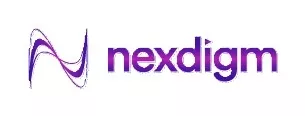- within Accounting and Audit topic(s)
- with readers working within the Advertising & Public Relations industries
- within Employment and HR topic(s)
- with readers working within the Business & Consumer Services industries
"Agile auditing doesn't mean auditing faster—it means auditing smarter."
In today's fast-paced business environment, traditional auditing methods often fall short in addressing the dynamic needs of organizations. Enter Agile Auditing—a revolutionary approach that transforms the way audits are conducted, making them more flexible, efficient, and responsive.
What is Agile Auditing?
Agile Auditing borrows principles from Agile methodologies, which are widely used in software development and project management. The core idea is to enhance collaboration, adaptability, and continuous improvement throughout the audit process. Unlike traditional audits, which follow a linear and rigid structure, Agile Auditing is iterative and incremental, allowing for regular feedback and adjustments.
The Agile principles are part of the Agile Manifesto and are meant to guide towards a more adaptive, flexible and collaborative approach of working. Using these principles, auditors can deliver frequent updates and early findings, allowing for quicker responses to emerging risks and changes in business needs. The compliance mind-set is shifted more towards a value-driven approach.
Key Features of Agile Auditing
Iterative Process: Audits are broken down into smaller, manageable cycles or sprints. Each cycle focuses on specific areas, enabling auditors to address issues promptly and make necessary adjustments.
Cross-functional Collaboration: Collaboration between functions help leverage knowledge and expertise of different departments within the organization. Real-Time Risk Management: Emphasizes on prioritization of audits based on risk and value to organization. Enables teams to quickly adapt to emerging risks, ensuring faster responses.
Stakeholder Involvement: It fosters enhanced collaboration through continuous engagement, aligning audit priorities with business needs.
Adaptability: The Agile approach allows auditors to quickly respond to changes and emerging risks. This flexibility is crucial in today's ever-changing business landscape.
Use of Technology: Leverages technology such as data analytics, automation, and artificial intelligence to improve audit efficiency and effectiveness.
Continuous Improvement: Regular feedback loops and retrospectives help identify areas for improvement, leading to higher quality audit outcomes over time.
Benefits of Adopting Agile Audit Approach
Enhanced Responsiveness: It allows teams to quickly adapt to emerging risks and organizational changes. Priorities can be re-evaluated and adjusted in real-time, ensuring the audit remains relevant.
Improved Risk Coverage: Auditors can pivot focus based on real-time risk intelligence, improving overall risk mitigation.
Increased Stakeholder Engagement: Frequent touchpoints with stakeholders foster better communication and alignment. Continuous feedback loops ensure that audit objectives remain aligned with business needs.
Faster Delivery of Insights: Iterative sprints allow for early and continuous delivery of audit findings. Management receives timely insights, enabling quicker decision-making and corrective actions.
Alignment with Organizational Strategy: Agile audits are more easily aligned with evolving business goal. Audit plans can be reprioritized to support strategic initiatives like digital transformation or ESG compliance.
Transition towards Agile Audit Approach
1. Evaluate current processes and define agile audit approach
- Identify key principles that are most relevant to organization
- Gap Analysis to identify inconsistencies
2. Establish Agile Audit Teams
- Cross Functional Collaboration
- Individuals with different skills and expertise
3. Provide Training and Support
- Application of Agile Audit Principles
4. Adopt Agile Tools & Techniques
- Reliance on technology such as data analytics, automation, and artificial intelligence (AI)
5. Pilot Test the Approach
- Identify issues and challenges
- Refine the approach
6. Continuously Monitor and Improve
- Regular meetings with client
- Review audit plans and processes based on feedback and emerging risks
Agile Auditing empowers internal audit functions to deliver faster insights, stronger risk coverage, and greater business alignment through iterative processes and realtime adaptability. As organizations evolve, this modern approach ensures audits stay proactive, relevant, and value-focused.
The content of this article is intended to provide a general guide to the subject matter. Specialist advice should be sought about your specific circumstances.


